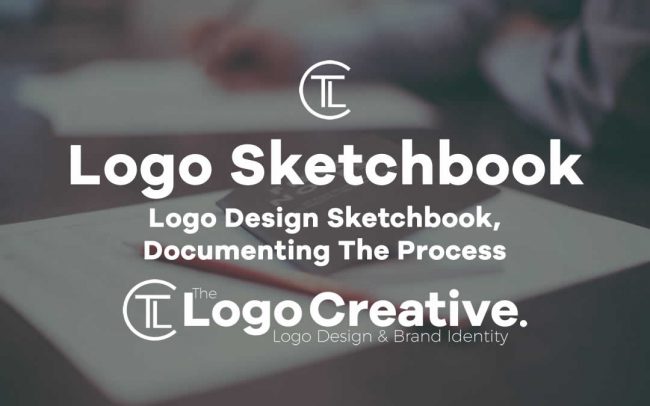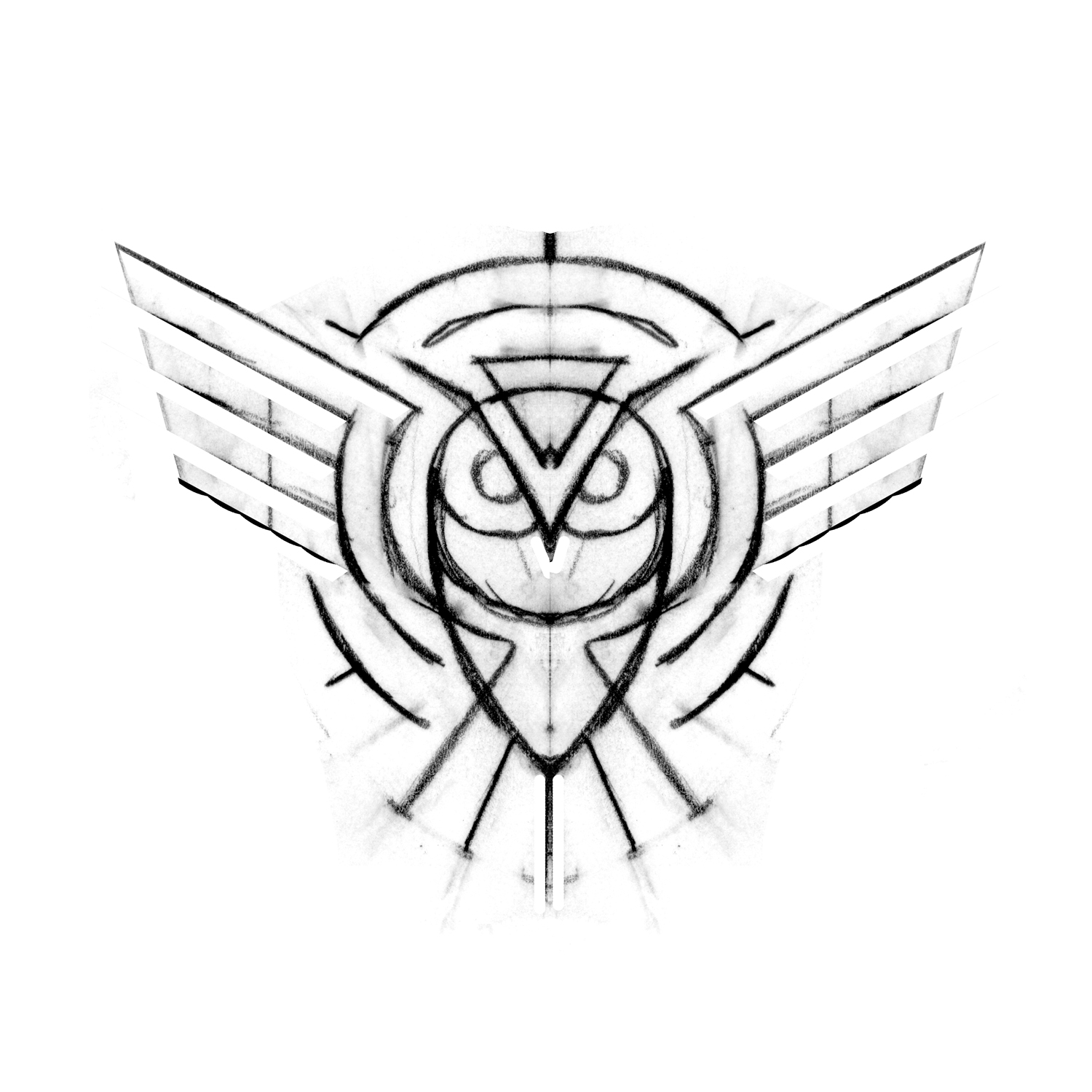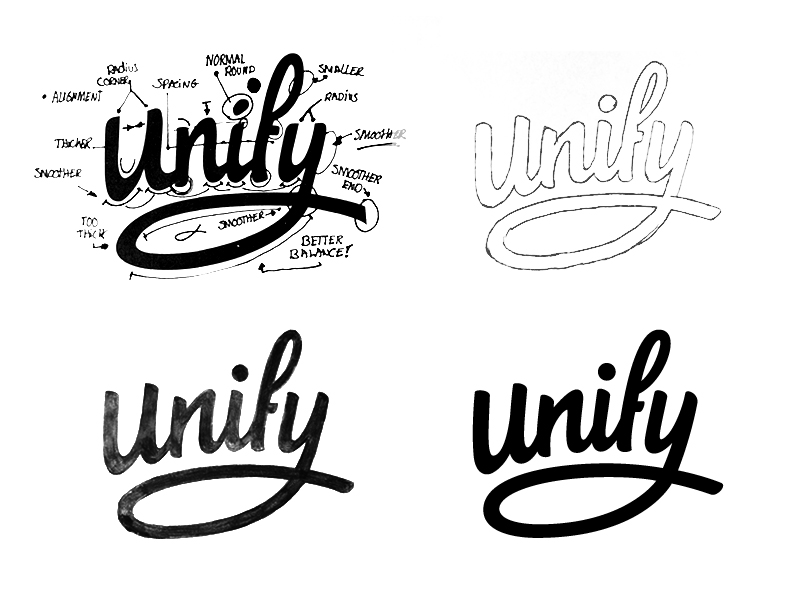I get a lot of designers asking me – “is it important to sketch and draw logos in a sketchbook as I’m not very good at drawing?”. In this article we dig deep into the Logo Design Sketchbook, Documenting The Process
As I explain in this article How Long Does It Take To Design a Logo under Sketching and concept drawing it helps but you don’t need to be an artist.
“for those designers who are not good at drawing it doesn’t matter how messy or lose it is it’s all about just getting everything done sort of a brain dump onto your sketchbook to get all of these concepts that you could potentially have a book and solidified so that it’s there. I must admit I spend quite a lot of time on this step even though some other designers may rush this step or just bypass it all together which is a big mistake in my opinion.”
“When it comes to my sketchbooks the ideas just seem to flow out of my head starting in pencil once I’m happy with the sketch and it’s been refined I outline with a black sketching marker this helps me see how the logo concept idea will look in black and white.”
Another great example is this video from Aaron Draplin were he goes through a quick logo process and in the sketching stage he explains
“This is sketching, this is meant to be fast and fun, and just kind of like free, and your hand is freer here than it would be in your illustrator.” – Aaron Draplin
Aaron has a great course on Skillshare that’s valuable for you to learn logo design or even if you’re already a designer it will help improve your process.
Draplin is right about your hand been allot freer than just jumping straight on the computer and trying to create something out of nothing. Trying to create a workable digital design without any ideation or concept generation stage is obviously going to be restrictive as you spend too much of your time staring at the computer monitor and you’re not letting your mind be creative.
I find sketching relaxing and when your more relaxed your mind can explore more easily as too when you’re sat in front of a computer dragging the mouse around that illustrator canvas worrying about those tiny details that aren’t important this early in the design process.
Sketching allows those creative juices to flow and your mind to clear out the mental fluff so to speak and you can also make new discoveries while sketching.
The freedom of sketching with a pencil allows you to make those tiny mistakes, it also gives you the freedom to consider and explore every angle without the fear of making a technical mistake and sketching is a repeated process, without focusing on perfection,
Those initial thoughts and ideas that you have let your brain figure out a need to be visible on paper before you can truly refine them digitally.
It’s a great way to be able to communicate to your clients on a visual level and feel the process in a more natural way and this sharing of ideas allows you to chat about it with a client on a more conceptual level, keeping it simpler for you and the client from a digital perspective.
I find it more beneficial to present several solid sketch ideas along with a descriptive rationale of the direction we’re going in and these can be narrowed down to a more focused route before the digital stage begins.
They say your first idea is never your best idea…So how do you know if you have not explored it? Learn to embrace your sketchbook and pencil you will be amazed at how quickly you can dump all your ideas out of your head and on paper and you will get too creative places you never imagined!
The Logo Designers sketchbook is a fascinating look at the creative process behind the creation of logos—for instance, viewers can see how much a logo changes from the initial idea to the finished product.
Table of Contents
Visual Diary
A sketch book is a way of documenting stages of the creative process and the sketchbook is a way to draft ideas. A good example of documenting the creative process is Lance Wyman’s The Visual Diaries 1973–1982
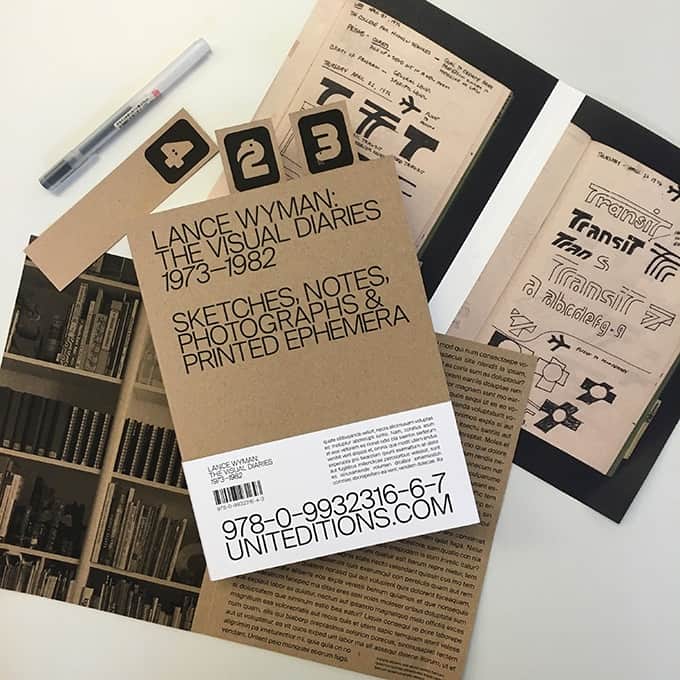
Legendary designer Lance Wyman who is known for branding the iconic Mexico Olympics brand identity in 1968. This identity that Wyman and his fellow colleagues deployed on a huge scale around Mexico City led Wyman who at the time was only 29 years old to a high profile career were he designed brand identities and signage for Mexico through to Washington D.C, Albuquerque and Calgary.
From 1973 to 1982, Wyman in great detail and thoroughly documented his creative process in his notebooks where he drafted his ideas.
He included in his notebooks working drawings for logos, sketches for typefaces, notes and conversation records, details of travel arrangements, colour swatches, detailed specifications for complex urban wayfinding systems and photographic reference and other forms of printed material he wanted to preserve.
Wyman said:
“The reason I started the notebooks is because I wanted to keep some kind of a record of what I was doing as far as keeping in touch with the complexity of the design I was getting into,” – Lance Wyman
Earlier in this article, we discussed how important it is to sketch but going a little deeper before you start sketching we must research and fully understand what it is we are sketching remember information is key to a great design that solves a creative problem.
Ok so you have a Logo design project, the brief has been submitted the client has signed the contract and paid the deposit but before you jump in the sketchbook and start drawing random images it important to think about research.
You need to research the business you’re creating the logo for you need to understand that business from the ground up and the message and image they are trying to communicate visually for their brand.
Once you’re comfortable and you have done your research I recommend before sketching doing a mind map.
A Mind Map is a visual thinking tool that can be applied to all cognitive functions, especially memory, learning, creativity, and analysis. Mind Mapping is a process that involves a distinct combination of imagery, colour and visual-spatial arrangement. The technique maps out your thoughts using keywords that trigger associations in the brain to spark further ideas.
*Below is a Mindmap I created to give you an idea of how they work
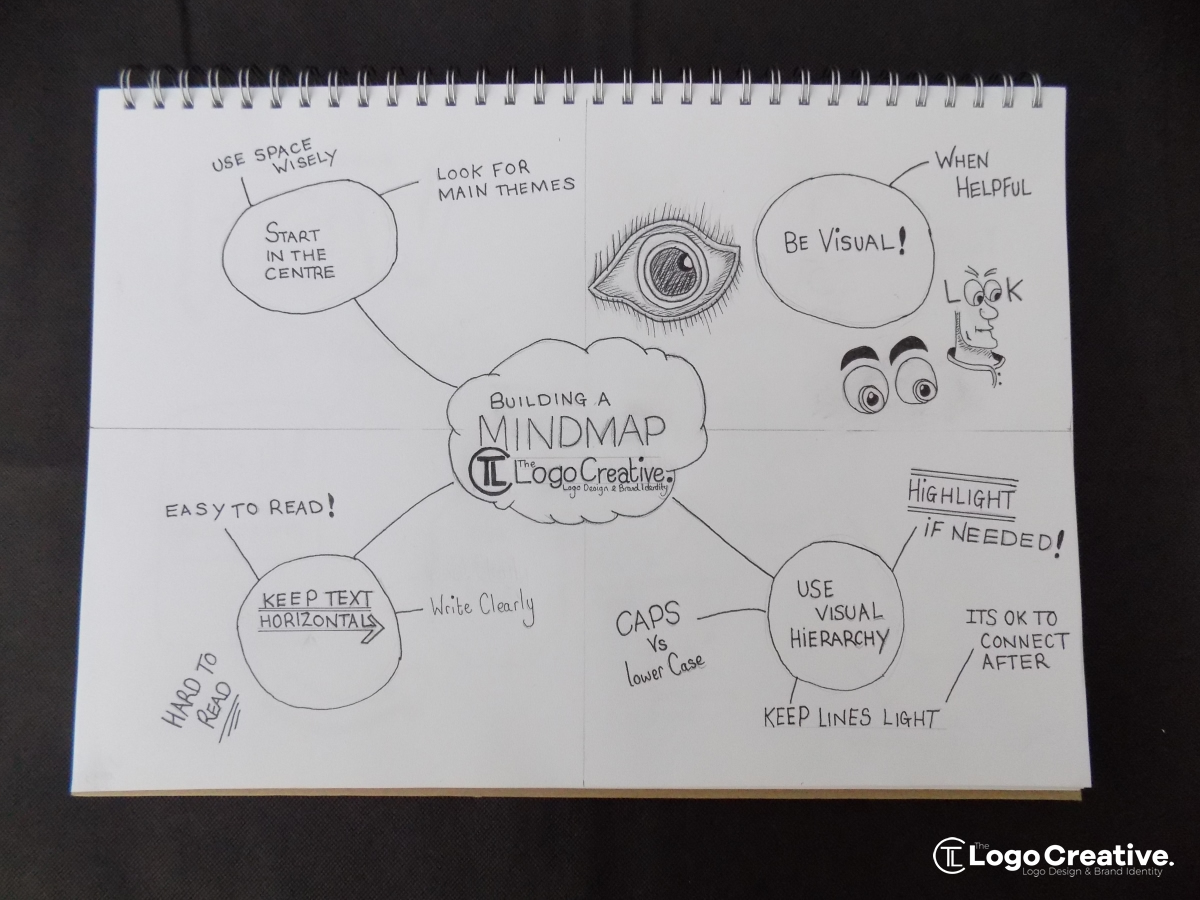
Depending on the scope of the project sometimes I find what I call sketch noting it will fell improve the visual flow.
Sketch Noting – Improve Visual Flow
Visual flow ties directly into format. Sometimes information is flying in so fast and while trying to keep up your format gets all wonky. You may have started with the intention of a simple column format may end up looking all scattered. Keeping things in a logical flow during live sketch noting is something that just takes practice. To aid in keeping your notes in a somewhat legible reading and visual flow, the simplest tip aside from guidelines are lines and arrows.
If your sketch notes seem to be running off and getting tossed around, draw simple lines as separators to divide content or lines around key concepts. If those high points have a logical flow, draw arrows to connect them so when you revisit your sketch note you will be able to understand your thoughts at the time.
*Below is a Sketch Note Flow I created to give you an idea of how they work
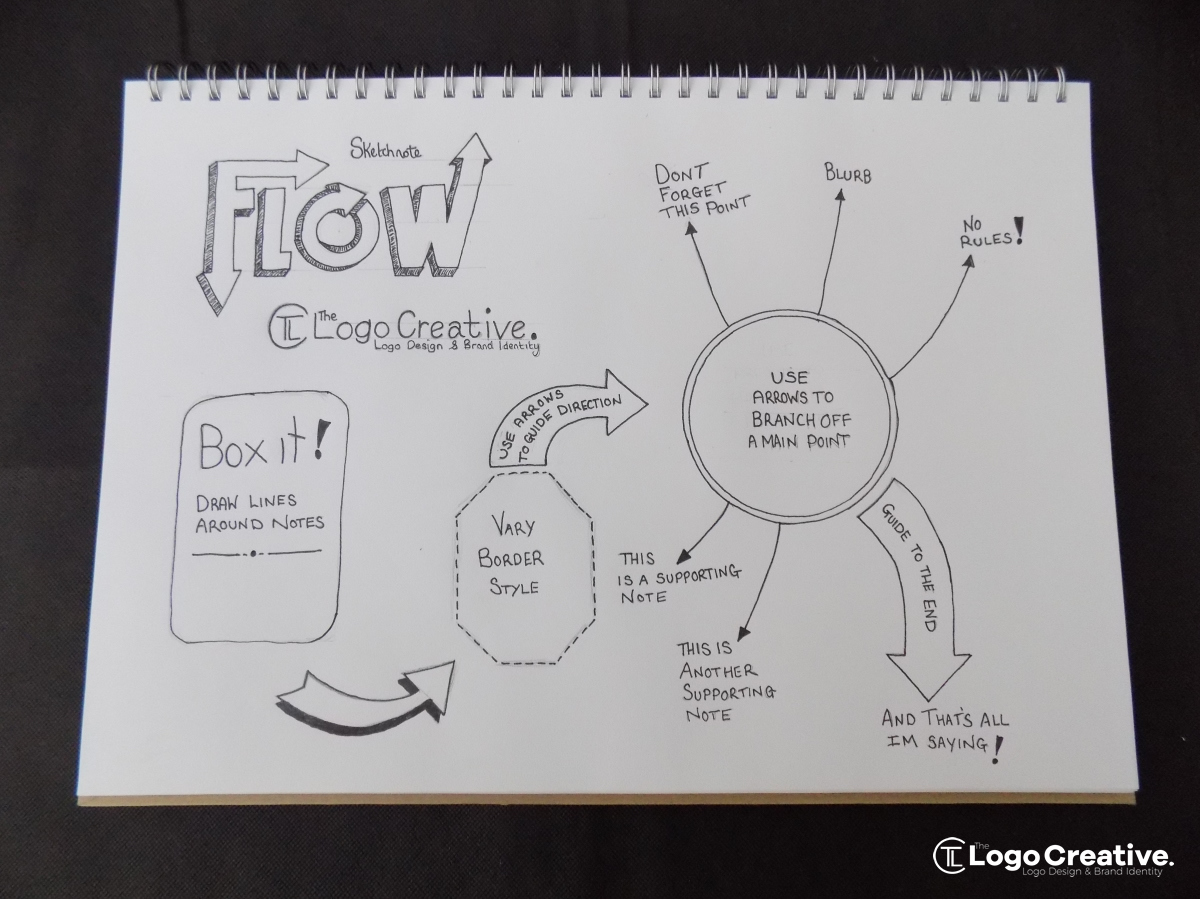
Now that we have a mind map and flow of ideas to hand we can now move on to the sketch book and dump all those ideas on paper to create some possible logo design directions and concepts.
I always start by writing the name of the company “ABC Company” and also any initials “ABC” this is a reference to letters your working with that are always visible at the top of the page.
Sketch out possible ideas by hand.
- Can you use just type?
- Can you create symbols which represent elements of what the company do?
- Can you pull out the first letters of the company name and use them in some way?
- Can you combine letters to make a symbol / monomark?
- Can you add elements to letters to make it represent an element of the company?
When you feel like you have hit something during the sketching process and you have some strong directions, choose several of the best concept ideas, then what I tend to do is refine them with a more detailed sketch and ink them with black drawing pens. The reason I do this is I want to see how the logo is going to look in black and white also if you’re going to be scanning in the sketch into illustrator you want a cleaner version for vectorising.
From The Community – Designers Sketches
Some logo and brand identity designers in our community were kind enough to supply me with some example of their sketch work so you can see the progression from initial sketch to final digital design. The below designers I picked for a reason a mixture of artists, illustrators, Hand letterers and logo/brand identity designers their styles are different and unique. in no particular order.
Michael Raisch: Who has recently been interviewed by The Logo Creative, and although Michael is a fantastic award winning logo designer, I consider him a fantastic portrait artist also you can check out the interview to see some of his portrait work it’s amazing.
Von Glitschka: His designer interview is on the way so be sure to check that out when it’s released, Von is an amazing illustrator and his illustrative design skills have been used by some of the most respected global brands, below you can see clearly initial sketch idea to final digital design.
Paul von Excite: His designer interview is on the way and another great one to check out, von Excite is a logo designer from the Netherlands specialising in type & lettering. his hand lettering is amazing and he’s one of my favorite hand lettering artists, but what I love about Paul is his process and how he documents it visually this is the reason I chose Paul we also featured his work and process for the Marvel logo design and its worth a read so you can see the process from start to finish.
Marcal Prats: Another graphic designer we have lined up for an interview, Marcal offered to send me some sketches and a little insight into his process for a Butifarring restaurant design project he recently completed. The project was also reviewed on Brand New – Under consideration
Step 1. Notepad sketches. Detect ideas patterns
Step 2. Computer sketches. Evolve the selected creative path
Step 3. Construction. Geometry in detail
Step 4. Colour
Step 5. Application
John Vingoe: A fellow UK based logo designer was kind enough to send us these sketches and final digital design which is a great example of the power of the sketchbook and shows the process of how the final idea came about. He is also taking part in our designer interviews so be sure to check that out when its released.
Ged Palmer: Another fellow UK based designer who is a specialist in lettering art and sign painting. He is also taking part in our designer interviews so another one to keep your eyes peeled for. He kindly supplied these sketches for us and what I love about Ged’s lettering style is its vintage look and feel. Whats also different about Ged is his type design sketches go from paper to hand-painted signs above shops.
Ian Paget – Logo Geek: Another fellow UK based Logo designer is Ian Paget who you may know as Logo Geek. He has also recently been interviewed by The Logo Creative. I also talk to Ian a lot on Twitter and he has kindly sent these pictures of his sketchbook another great example of a sketchbook in use, Ian said “I tend to use either an A5 sketchbook or a large A1 sheet of paper”, and now he has more space he is preferring the larger paper.
Kevin van Eijk: As he refers to himself as a Creative dude, daydreamer and logo lover, He’s a graphic designer from Spijkenisse a town in the western Netherlands and founder of dipx, He’s a active member in the logo design community and at the point of writing this currently updating his personal identity. While chatting with Kevin he said we can use the sketches he has currently done. Its and intresting mark that Kevin is trying to acheive making a monogram from the letters dipx which is always a challenging task.
He is also taking part in our designer interview series so that’s something we can all look forward to when its released.
Conclusion:
Sketching is fun but in my opinion a vital and important stage in the design process.
When you stop worrying and allow your ideas to evolve, you’ll discover how enjoyable it is to sketch. Especially when you find your perfect pencil and paper combo! Mine’s the Staedtler Mars Technico 2mm and Rotering 800+ Mechanical Pencil on the dotted Moleskine Notebook. I have the Remarkable paper tablet on pre-order so I’ll be using this for sketching from time to time but I’ll give you an update on this at a later date.
My challenge to you: The next time you’re given any sort of communication task, whether it’s a logo, a brand concept, or even a map with directions to your favorite coffee shop, try your hand at sketching. By incorporating sketching into your everyday tasks, you’ll find it makes an appearance in your professional routine as well.
Here’s to the trusty pencil and sketchbook!
You may find this article I wrote interesting about Logo Design Sketching equipment
Useful Links & Great Deals
- The Equipment We Use & Recommend
- Quality Design Bundles
- Get 2 Months free Skillshare
- Get an Exclusive 20% off Logo Package Express
- Learn Logo Design Online

